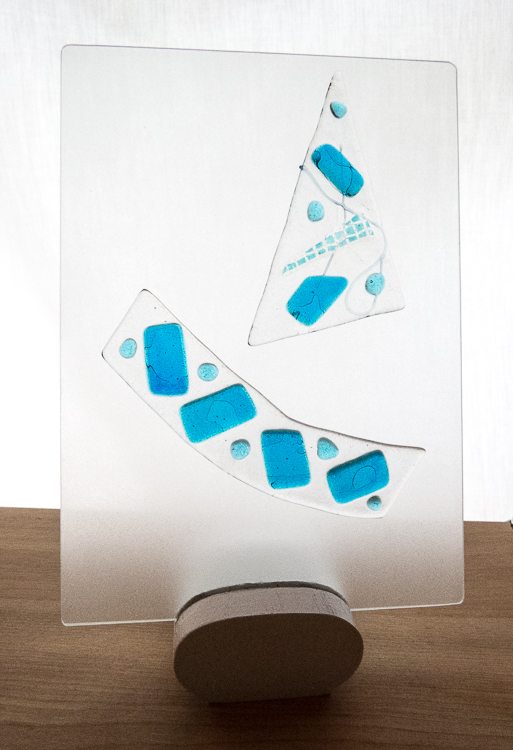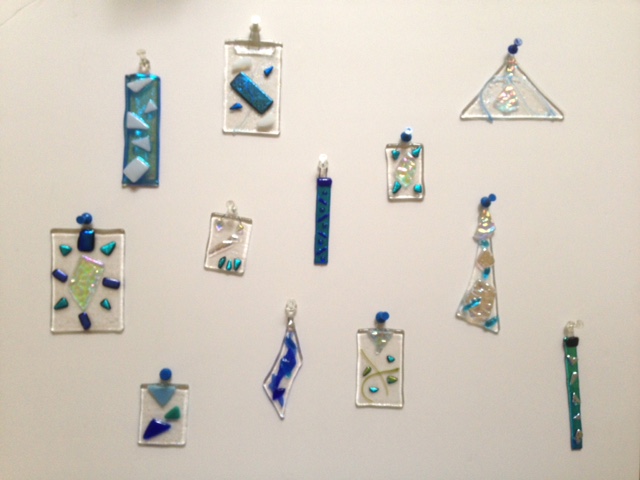What emotion are you selling? the webinar host asks us. That’s the question you have to answer.
Good question. Another question might be, Why do you want to sell emotion?
I’m watching the second in a series of free webinars about marketing your art. The host is selling us the emotion of happiness, the artist’s fantasy – how to make a living, or even get rich, by marketing your art effectively.
This particular emotion costs $2,000, the price of her “semester” course.
The course will guide artists in how to develop and market a “creative enterprise.” Because it isn’t just about selling a piece of art. There’s a whole package there, where the artist has a relationship with each buyer of this luxury product.
My left brain says that her basic principles are correct.
Art is a luxury product, so lowering the price isn’t the way to sell more; cheaper art is just seen as “cheap.”
Art has to do more than just decorate a wall. Consumers now want interactivity. They want a relationship, an emotion, built into every product.
Artists have to build individual relationships in order to sell their artwork to their target audience.
Like other products, art has to be marketed as a solution to a problem. The emotion you’re selling is a way of solving the consumer’s problem – they need to vent anger, save the environment, make sense of their lives.
These are all sensible concepts, in line with modern marketing principles that operate within a non-establishment approach. In other words: If you don’t want to sell your art through the gallery system, you have to learn marketing and you have to have a personal hand in that marketing.
My right brain says, Hmmm. Something here doesn’t feel right.
Left brain, help me out here. I’m not an old curmudgeon who loves the gallery system; far from it. But there is a subtlety of meaning here that’s lost in the webinar translation.
I don’t believe that art should be a luxury product. I realize this flies in the face of centuries of art patronage, and that anything beyond food, water, clothes, medical care and shelter is technically a “luxury.”
What I mean is that beauty isn’t a luxury product; it is a necessity for the soul. That symbolic meaning is grasped even by children and should continue to deepen thoughts throughout our lives; our nation and world would be the better for it. That the sense of awe and mindfulness instilled by quality art don’t require a college degree; they are gifts accessible to everyone.
In my own art, I strive to bring the viewer to a perspective in which he gets a shock of recognition as he sees beauty in the familiar weeds and fungi of his own yard.
I offer abstract pieces to intrigue, give pause, open avenues of recognition, so that the viewer begins to make connections between those pieces which have been disconnected.

I would rather see my art hanging in a free public venue than on the living room wall of an oft-vacant summer home.
Where I have erred, in applying this “common man” sensibility, is when I sell my soul.
I don’t mean that I am dishonest. As in journalism, I believe art requires the highest ethics. Unlike journalism, though, the artist owes the world her own unique truth, nothing less.
When I belittle my visions in order to sell something, anything – that is where I fail.
When I went to great lengths in my photography business to figure out how to produce postcards of local scenes for 25 cents so that they could be sold for $1, that was an injury to my spirit. That was selling my soul.
When I lowered and lowered the price of my fused glass holiday ornaments, so that I would at least make enough money to cover my supplies, that was a personal insult to my work. That was selling my soul.
Volume isn’t the way to sell art, with the exception of reproductions of your intellectual property. Posters and greeting cards allow people to take home a small piece of the beauty that enraptured them in the gallery.
This new approach – creating an enterprise that depends on your ability to cast yourself as part of the product – strikes me as just another way of selling your soul.
It’s so much like the Self-Publishing School approach, which isn’t about writing books but is about aligning with whatever’s currently the top seller on Amazon.
It’s also like the now-common idea that journalists must develop a personal brand around their name, instead of putting their credibility into every story topped with their byline.
For now, that’s the direction that disruptive technology has taken us with art.
Artists have struggled for many centuries with the relationship between art and commerce. I don’t have a better answer yet. It might involve hiring a marketing expert. It might involve being poor. It might involve separating art from money altogether.
I am not a brand. In these days I have on earth, I’m connected to spirit through my physical body, and that body produces art, and that art resonates with other spirits.
Today, that’s all I know about marketing.
The penny for this day is a 2007. I was recovering from surgery, and from the bed I struggled to get prints ordered in time to sell at Oktoberfest.

Art heals.
Agree, Tina… there should be “soul care insurance” to cover the cost of art … or maybe “universal soul care” that would support public art.
You know I hear you on this topic. Artists have always had that struggle between artistic integrity and the need to eat. Sometimes there is a point where compromise allows the production of more art, thus justifying the sacrifice. And sometimes there isn’t. Listen to your heart.
Thanks, Erika!